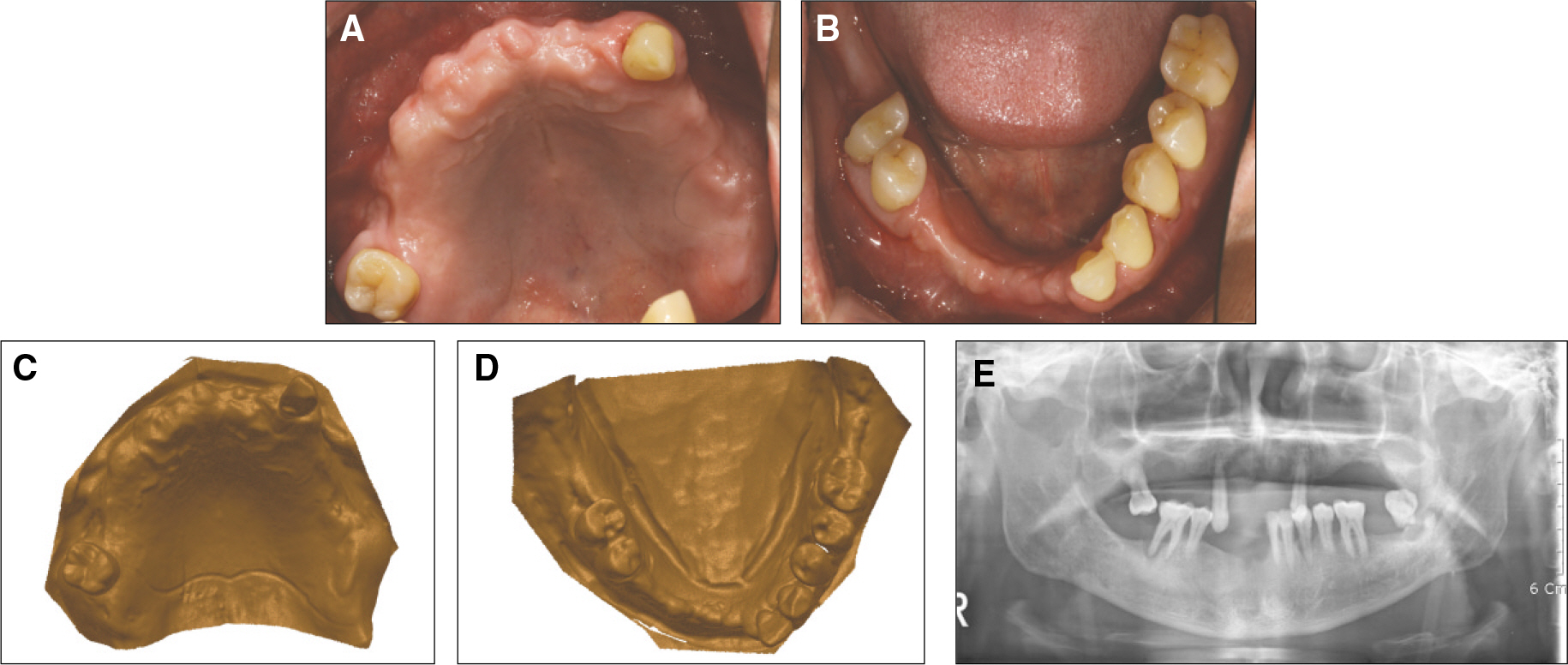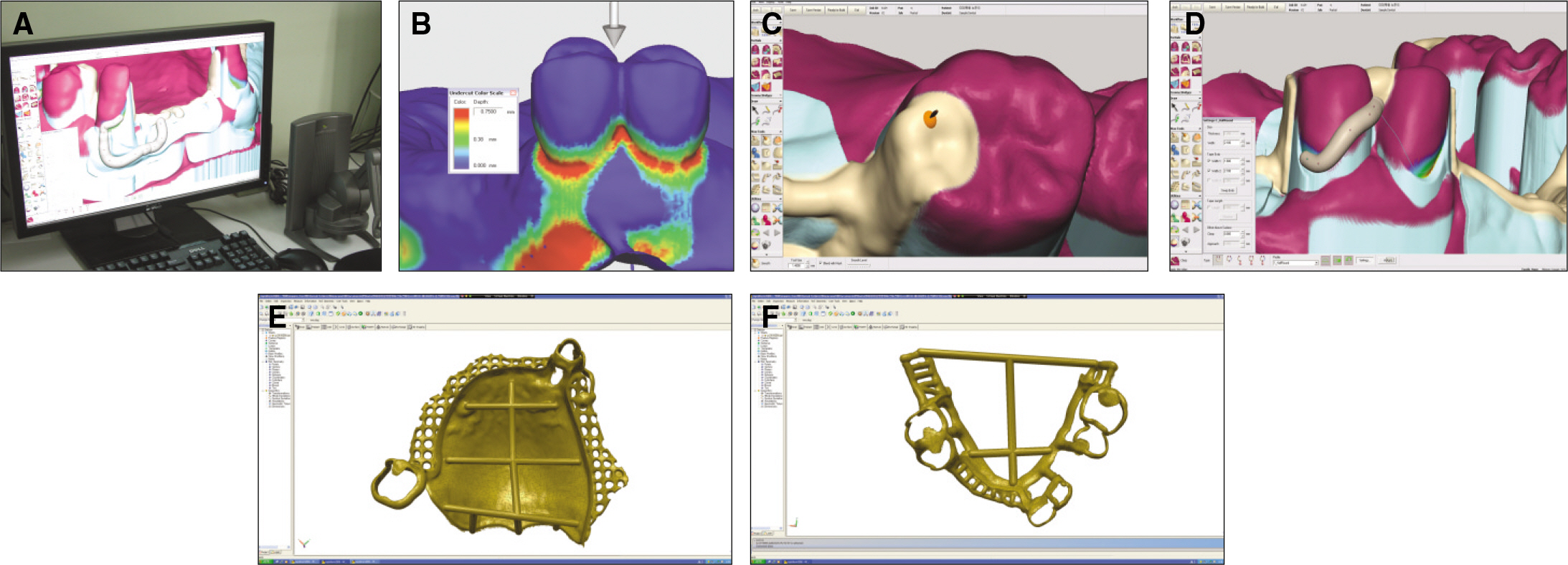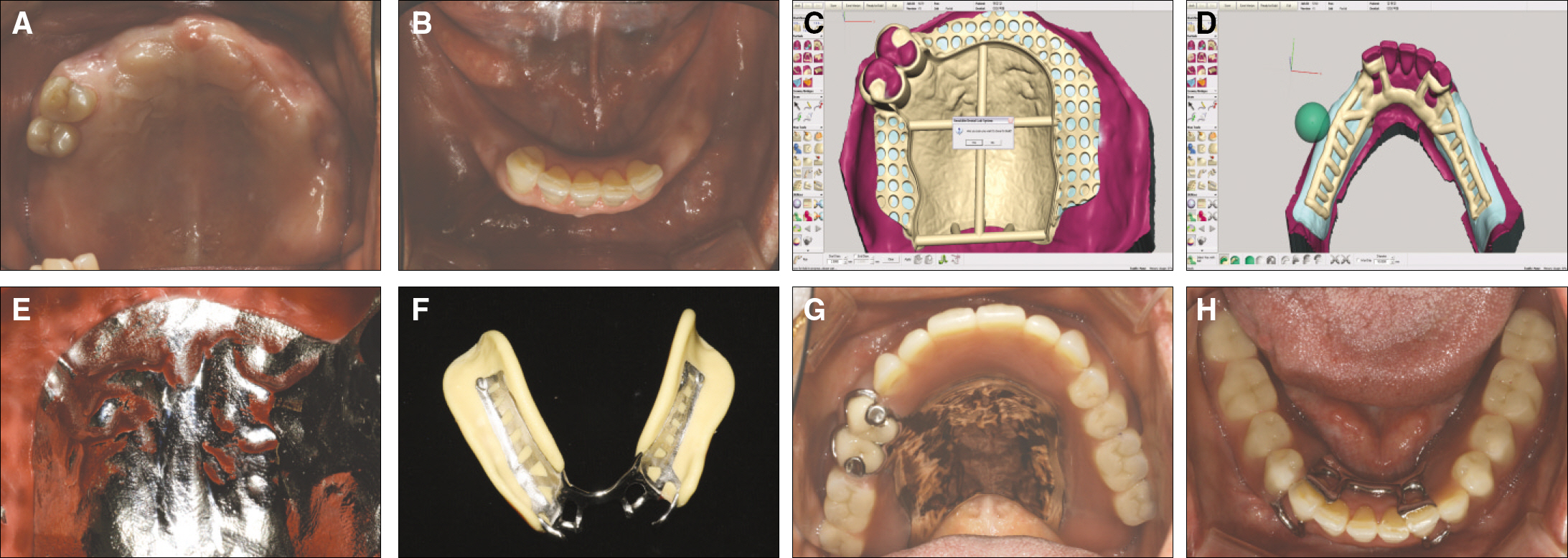J Korean Acad Prosthodont.
2011 Oct;49(4):354-361. 10.4047/jkap.2011.49.4.354.
Surveyed restoration and RPD framework design utilizing electronic surveying
- Affiliations
-
- 1Department of Prosthodontics, School of Medicine, Ewha Womans University, Seoul, Korea. jimarn@ewha.ac.kr
- 2Department of Prosthodontics, School of Dentistry, Seoul National University, Seoul, Korea.
- KMID: 2195531
- DOI: http://doi.org/10.4047/jkap.2011.49.4.354
Abstract
- There are still many limitations on fabricating dentures using digital method while computerized production of fixed prostheses utilizing intraoral scanner and CAD/CAM technology has propagated rapidly. Recently the digital solution of fabricating removable partial denture by applying haptic input device, electronic surveying, and rapid prototyping was introduced. In this case presentation, five patients were treated with surveyed crown and removable partial dentures by this digital solution. Fit of dentures was excellent except for one case which showed morphological difference between the actual teeth and that of master cast by the erroneous impression process. There also was not any problem of stability and retention after adaptation in the clinical setting.
MeSH Terms
Figure
Cited by 2 articles
-
Comparison of internal adaptation of removable partial denture metal frameworks made by lost wax technique and printing technique of pattern using CAD
Wonjun Choi, Yi-Hyung Woo, Hyeong-Seob Kim, Janghyun Paek
J Korean Acad Prosthodont. 2018;56(1):17-24. doi: 10.4047/jkap.2018.56.1.17.A case of removable dentures using digital method
Ji-Soo Lee, Su-Jin Ahn, Richard Leesungbok, Suk-Won Lee
J Korean Acad Prosthodont. 2018;56(3):250-257. doi: 10.4047/jkap.2018.56.3.250.
Reference
-
1.Fasbinder DJ. Clinical performance of chairside CAD/CAM restorations. J Am Dent Assoc. 2006. 137:22S–31S.
Article2.Syrek A., Reich G., Ranftl D., Klein C., Cerny B., Brodesser J. Clinical evaluation of all-ceramic crowns fabricated from intraoral digital impressions based on the principle of active wavefront sampling. J Dent. 2010. 38:553–9.
Article3.Han J., Wang Y., Lu¨ P. A preliminary report of designing removable partial denture frameworks using a specifically developed software package. Int J Prosthodont. 2010. 23:370–5.4.Eggbeer D., Bibb R., Williams R. The computer-aided design and rapid prototyping fabrication of removable partial denture frameworks. Proc Inst Mech Eng H. 2005. 219:195–202.
Article5.Williams RJ., Bibb R., Rafik T. A technique for fabricating patterns for removable partial denture frameworks using digitized casts and electronic surveying. J Prosthet Dent. 2004. 91:85–8.
Article6.Williams RJ., Bibb R., Eggbeer D., Collis J. Use of CAD/CAM technology to fabricate a removable partial denture framework. J Prosthet Dent. 2006. 96:96–9.
Article7.Williams RJ., Bibb R., Eggbeer D. CAD/CAM in the Fabrication of Removable Partial Denture Frameworks: A Virtual Method of Surveying 3D Scanned Dental Casts. Quintessence J Dent Technol. 2004. 2:268–76.8.Bibb RJ., Eggbeer D., Williams RJ., Woodward A. Trial fitting of a removable partial denture framework made using computer-aided design and rapid prototyping techniques. Proc Inst Mech Eng H. 2006. 220:793–7.
Article9.Pham DT., Gault RS. A comparison of rapid prototyping technologies. Int J Mach Tool Manuf. 1998. 38:1257–87.
Article10.Yadroitsev I., Bertrand Ph., Smurov I. Parametric analysis of the selective laser melting process. Appl Surf Sci. 2007. 253:8064–9.
Article11.Kibi M., Ono T., Dong J., Mitta K., Gonda T., Maeda Y. Development of an RPD CAD system with finite element stress analysis. J Oral Rehabil. 2009. 36:442–50.
Article12.Sun Y., Lu¨ P., Wang Y. Study on CAD&RP for removable complete denture. Comput Methods Programs Biomed. 2009. 93:266–72.
- Full Text Links
- Actions
-
Cited
- CITED
-
- Close
- Share
- Similar articles
-
- 3D printed surveyed restoration and metal framework in removable dentures: A case report
- Restoration of partial removable dental prosthesis after fabricating of surveyed crowns utilizing electronic surveying: a case report
- The path of placement of a removable partial denture: a microscope based approach to survey and design
- Rehabilitation of severely worn dentition using Monolithic surveyed restoration and electronic surveying in RPD metal framework fabrication: A case report
- A case of removable dentures using digital method









